- Defining search ads
- Defining display ads
- Comparing the average CVR
- Comparing the average CPC
- When to use each ad type
- Search: supplement organic traffic
- Search: capture high-quality leads
- Search: catering to a local audience
- Search: shorter sales cycle
- Search: promote emergency products
- Search: smaller budget
- Display: product or service is visual
- Display: create awareness with passive users
- Display: longer sales cycle
- Display: to reach niche markets
- Conclusion
It can be tough for any advertiser to determine whether to use search ads vs display ads in their online campaigns. It’s an imperative decision to make because using the wrong ad format could waste a significant percentage of paid advertising budget.
So, what’s the difference? How do you know which is better? How can you use both search and display to maximize your return? In this article, we address all of these questions and discuss everything you need to know about using display ads vs search ads for your business.
What are search and display ads?
Search ads
Paid search advertising is one of the most popular forms of PPC advertising in which brands pay (using an auction-based model) to have their ads displayed above and below organic search engine results when users search certain keywords.
For example, a search for “online doctor” showed this text ad above the organic results on Google’s SERP:
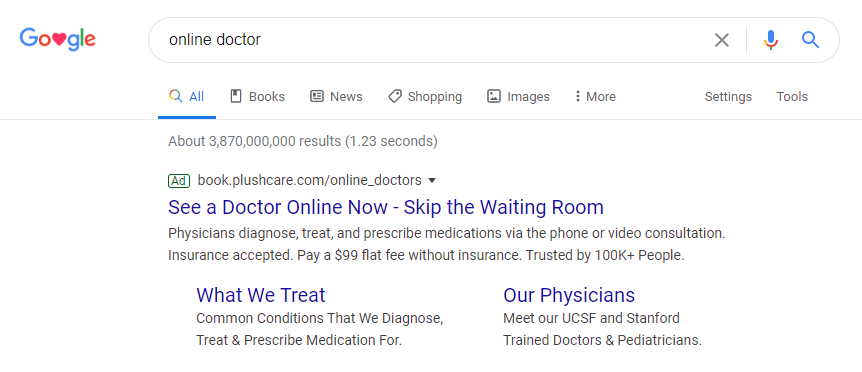
Search ads have three main components — a headline, display URL, and description text — all designed to convince users to click through. Ad extensions can also be included to provide users with additional information.
How often search ads appear, their rankings, and the cost per click — all depend on the bid and Quality Score.
Display ads
Although Google display advertising still originates within the Google Ads interface, display ads perform very differently from their paid search counterparts.
The main difference between Google search ads vs display ads is that search ads are a form of “pull” advertising while display ads are “push” advertising. Meaning, search ads only appear to those who are already searching for your product or service, while display ads are paid placements that appear based on various targeting parameters.
Not only that, display ads aren’t limited to appearing in only one location like search ads (in the SERP). Display ads appear across the entire GDN — over 2 million sites reaching over 90% of online users. They can show in multiple places on social media, such as natively in news feeds or on the side of the main feed:
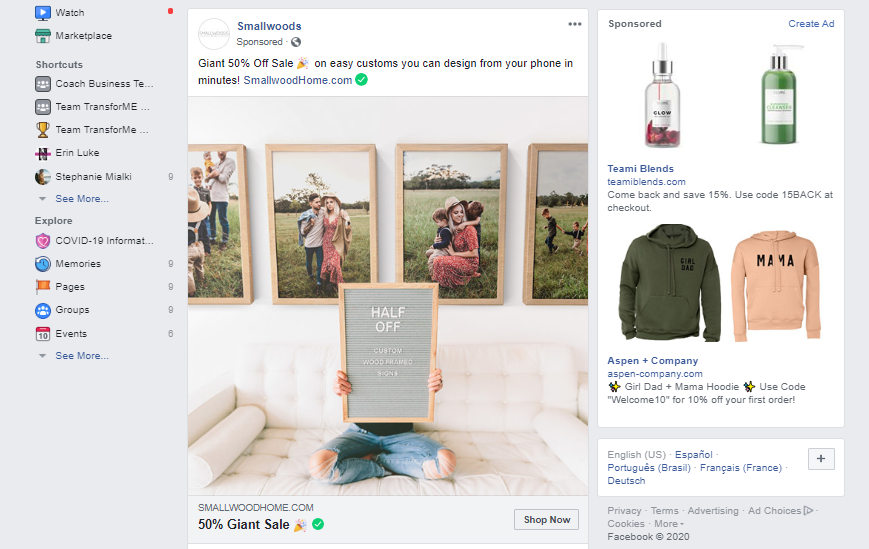
As banner ads above the main content on sites or to the right of the main content:
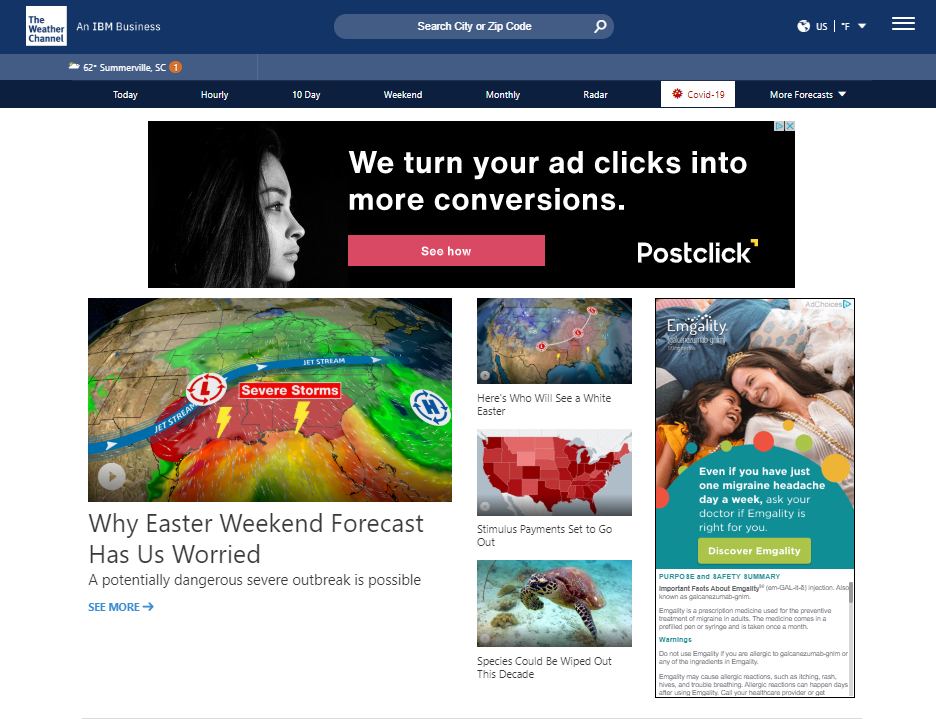
Or personal email inboxes as text-only ads at first, then expanding into image ads when opened:

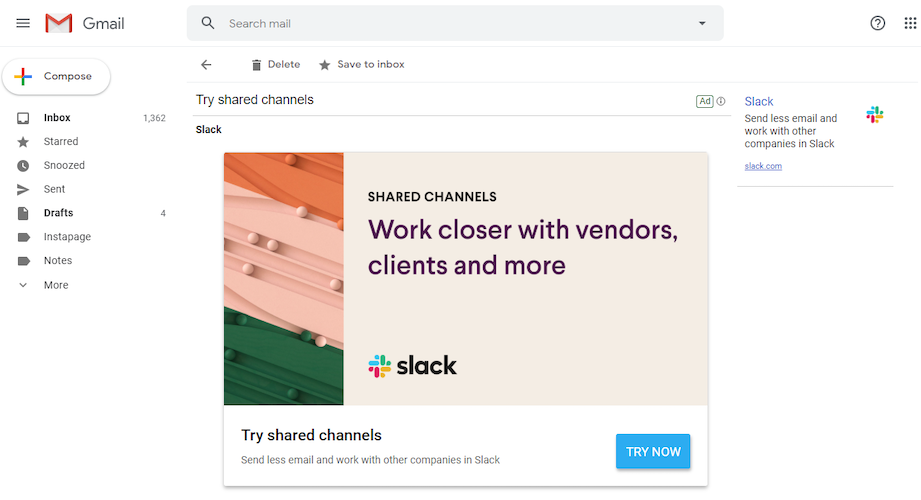
Comparing the average metrics for search & display
Two major metrics to consider between display ads vs search ads are conversion rate and cost per click, because the Google Ads industry benchmarks for each advertising platform vary greatly.
Average CVR
The average conversion rate across all industries is 4.40% for search campaigns, while the average for display campaigns is only 0.57%:
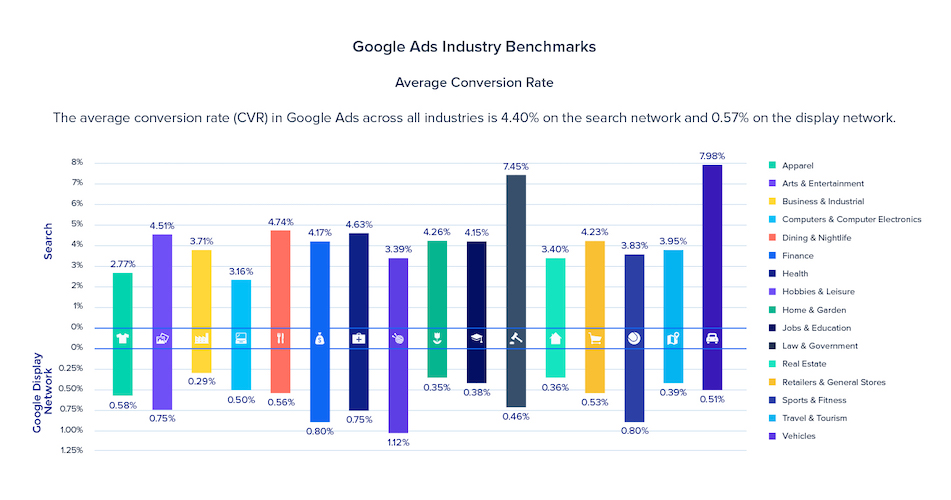
Notice how the highest display conversion rate (1.12% for hobbies & leisure) doesn’t even reach the lowest search conversion rate (2.77% for apparel). The reason search ads typically drive more conversions than display ads is because the Search Network connects advertisers to people actively looking for products with higher intent, so they’re naturally more likely to convert.
Average CPC
Although the average conversion rate for display ads is lower, so is the average cost per click. The average Google Ads CPC is $2.41 for search network ads, and only $0.59 for display network ads:
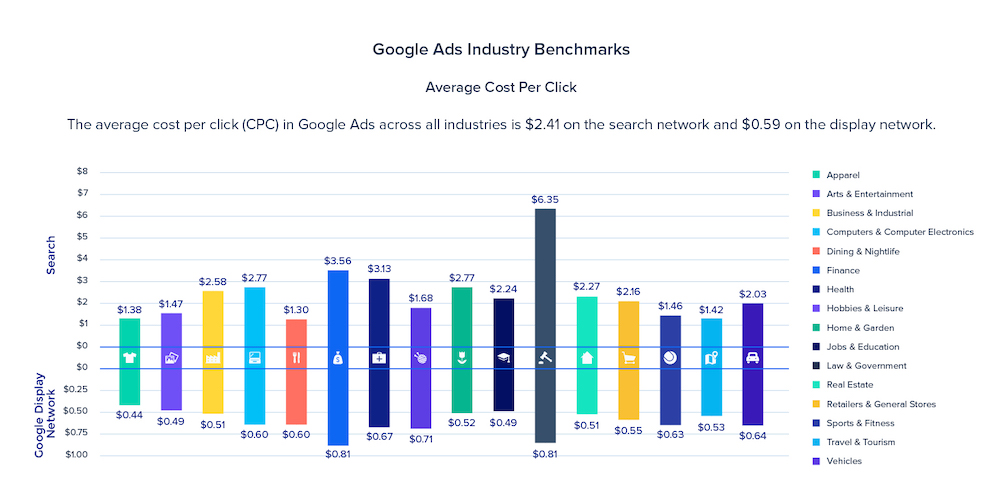
No doubt a major benefit for brands trying to save ad spend. However, every brand has different business goals. So how do you know if and when to use search vs display ads?
When to use each ad type
Google encourages advertisers to set up both search and display campaigns, as this will provide the most reach. However, maximum reach isn’t necessarily a good thing, because the key to advertising is getting your product or service in front of the right audience — not just the biggest.
6 reasons to use search ads
1. To supplement organic traffic
Some businesses can’t afford to spend the time to rely solely on SEO to pay off. While organic results focus on comparative content, search ads bring people directly to solutions much faster. This makes search advertising a great short-term strategy while continuing to build your organic presence.
2. To capture high-quality leads
With search ad campaigns, you can use different keyword match types to trigger your ad, along with negative keywords so your ad isn’t triggered when users search for specific keywords that are irrelevant to your business. Doing this allows you to create your ads precisely to match a user’s search intent, like VWO did:
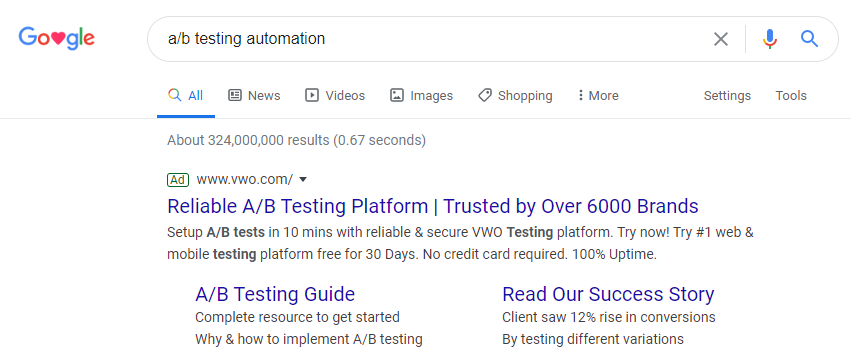
3. When catering to a local audience
If you offer a local service, and are trying to reach a nearby audience, search ads are the better option:
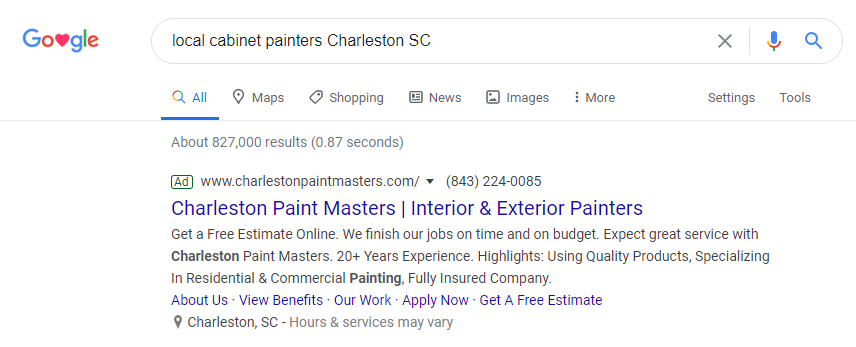
Reaching a worldwide audience with display ads won’t be of much value to you with such a small, specific target audience.
4. If you have a short sales cycle
Search ads are ideal if your product or service has a short sales cycle, and therefore, you don’t need to continue advertising (remarketing) to people who have previously engaged with your brand.
5. To promote emergency products
If you’re someone who provides an “urgent” or “emergency” service (plumbers, locksmiths, tow trucks, emergency veterinarians, electricians, etc.) it’s a good idea to start with search ads. These are services that someone likely won’t pay for while they’re reading a blog article or scrolling Facebook and happen to see your display ad.
Instead, when someone gets locked out of their car, or their dog suddenly falls ill, they are likely going to search for a service to help them immediately:
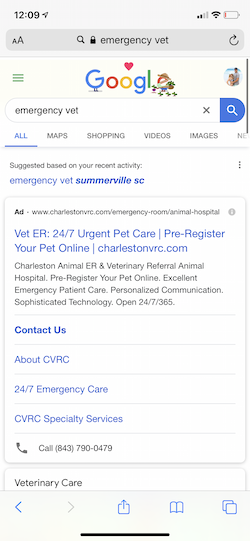
Note: These emergent, when-needed services are most likely going to be searched for on a mobile device. To make it simple for the searcher in need, use call extensions as shown in the ad above.
6. If you have a smaller budget
If you’re just starting out, or creating a lower-budget campaign, search engine advertising may be the way to go for several different reasons.
- With a PPC advertising campaign, you can either pay per click or pay per 1,000 impressions.
- Bidding on highly relevant keywords gives you more control over who you reach, producing more qualified leads, higher conversion rates, and better ROI.
- It is easier to measure and justify PPC efforts — and then once you’ve mastered those, you can consider expansion to the Display Network.
4 Reasons to use display ads
1. If your product or service is more visual
One of the main advantages display ads have over search ads is that they can include images and video. This is great for promoting consumer products and services that rely heavily on visual demonstration, such as apparel, home decor, vacation packages, adventure/entertainment:

Display ads also work particularly well with visual digital assets like video, ebooks, infographics, etc.:

Note: Google has made it increasingly easy for advertisers to create video campaigns, especially for those who can leverage existing video creative. This can be an extremely powerful display advertising option since people are more likely to engage with video content than text or even image ads.
2. To create awareness among those with passive intent
People browsing websites and seeing display ads aren’t actively searching for a product or service. They’re probably still in the discovery or awareness stage of the marketing funnel, researching their options with passive intent.
This makes the display network great for creating demand for your product or service (even if people don’t know they need it), rather than answering demand like the search network. In other words, it allows you to cultivate a feeling of want and need, instead of immediately capitalizing on one that already exists.
See how LegalZoom presents viewers with a question to get them thinking and lets them know they’re available for guidance:

By using Google’s targeting options and appearing on sites that are popular among your target audience, you can quickly build brand awareness before moving onto more high-intent search engine advertising.
3. If you have a longer sales cycle
Just like search ads are best if your product or service has a shorter sales cycle that doesn’t require multiple touchpoints or retargeting, display ads are ideal if your product or service isn’t typically purchased immediately and therefore has a longer sales cycle. This is often the case for large expenses such as automobiles, higher education, enterprise software, etc.
In these situations, you must ensure your brand stays top-of-mind for prospects as they consider making a purchase, which is done through digital advertising strategies like:
- Cross-channel marketing — disseminating paid messages to prospects across multiple devices on a variety of digital marketing channels, to usher consumers toward purchasing a product or service
- Omni-channel marketing — providing a seamless user experience across all channels relevant to the buyer’s journey, allowing them to progress through the entire marketing funnel without friction
- Retargeting — showing ads to anyone who has interacted with your brand in the past, so you can stay in front of them and top-of-mind even after they have left your website (this is especially useful in the ecommerce industry, for example, with abandoned shopping carts)
For instance, after browsing the LFT Clothing Brand website, I was retargeted with this Facebook ad:
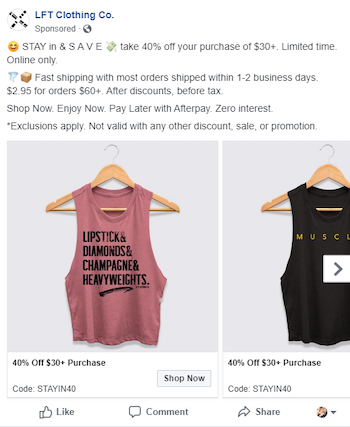
4. To reach niche markets
Part of the reason display ads successfully drive brand awareness is because they’re generally found on sites where potential customers are already spending their time. Google matches your keywords and ads to relevant web pages across the over 2 million websites on the GDN.
This means you can easily cater to a niche audience with interest-targeted ads and/or contextual ads.
For example, by placing this ad for Career Rehab next to an Entrepreneur article about standing out on Instagram, Amazon Kindle is likely to get in front of people who will take interest in the book:
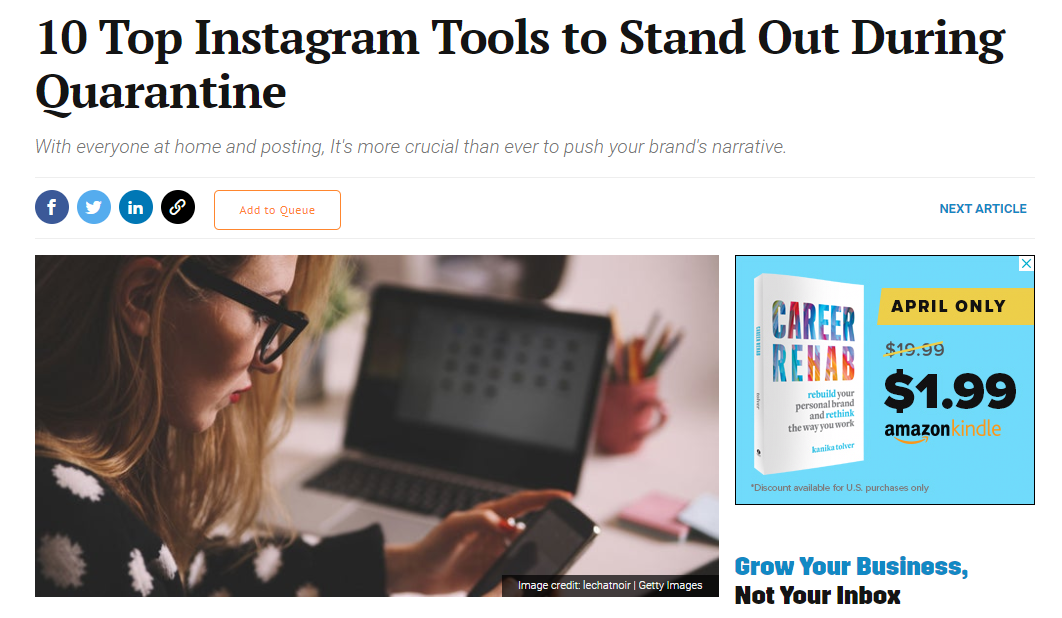
Someone may not be aware of the book (or the deals that Kindle offers), but the ad would drive awareness.
Which will it be: display ads or search ads?
Both ad formats have their benefits, and both can be extremely useful in different situations. However, you must understand the difference and when exactly to use each one.
Even after you select your format and create an ad, you must connect your ads to relevant post-click landing pages for the best results. Post-click landing pages are where conversions happen. Request an Instapage Enterprise Demo today to see how you can create these dedicated post-click landing pages at scale.

See the Instapage Enterprise Plan in Action.
Demo includes AdMap™, Personalization, AMP,
Global Blocks, heatmaps & more.
